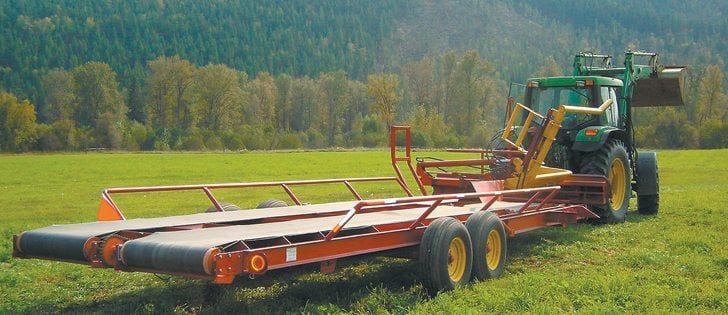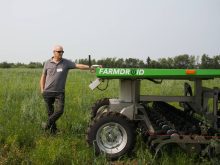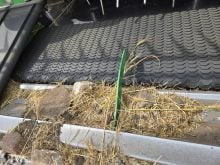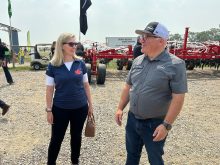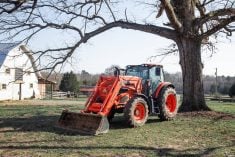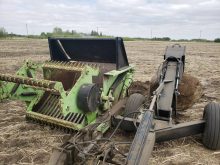Hastier haylage Stop wrap damage and cut bale retrieval time in half with self-unloading wagon
Commercial hay producers might be interested in a new round bale wagon that gently retrieves 10, five-foot-wide wrapped bales in 10 minutes and deposits them at the side of the field without damaging the plastic wrap.
“On my farm, the barn is beside the field, so it’s no problem picking and dropping 10 bales in 10 minutes,” said Jack Rennie.
Ten in 10 is easy unless the operator has an extra long drive to the drop site, he added.
Rennie, a commercial hay grower, inventor and short-line manufacturer at Lumby, B.C., just introduced a new, patented round bale wagon that handles 10 of the five-foot bales or a dozen four-foot bales.
Read Also

Why feds imposed EV tariffs
Moe and Kinew have a fight on their hands when it comes to eliminating the EV tariff. Canada has to worry about pissing off the U.S. and Mexico and hundreds of thousands of auto workers.
He said his new wagon is self-loading and self-unloading and requires only one operator. There’s no need for an extra loader tractor.
It cuts bale retrieval time in half compared to conventional methods.
“I designed it to be a fast, efficient bale wagon that reduces damage to wrapped bales to an absolute minimum,” said Rennie.
He said plastic wrap is brittle in cold weather and worse in warm weather. As a result, it rips when grabbed by a machine.
“So you should never try to grab them. We just roll them. The wagon has a hydraulic arm at the front on the right side. It’s like a cradle. It wraps around the bale and just gently rolls the bale up onto the belts on the wagon.”
Rennie said there are only three toggle switches in the cab to control all functions.
“When the operator hits the right switch in the right sequence, everything else happens pretty much on its own.”
- One toggle activates the arm to pick up the bale. Once in motion, the arm does all the work by itself without further guidance from the operator. The operator has already told the arm whether the bale goes on the left belt or the right belt.
- One toggle tells the twin belts when to roll to the back. This is used while loading as each pair moves back. It is also used for unloading when the deck is tilted.
- One toggle tilts the deck to the rear so the belts can unload the bales at the drop site.
Rennie said the loader places a pair of bales side by side on the twin belts. Once each pair is loaded, the operator moves the twin belts to the rear by one position to make space for the next pair. The same toggle that moves pairs of bales to the back also unloads bales when the deck is tilted.
Although his bale wagon functions adequately with a 65 horsepower tractor, Rennie said it needs 85 h.p. to achieve optimal efficiency because hydraulic demand is 15 gallons per minute.
The wagon is 32 feet long and less than 11 feet wide. Cradle width for the bales is adjustable between 38 and 62 inches. The cradle length is manually adjustable from 48 inches to 60 inches for different sizes of bales.
Rennie said he received his patent for the new bale wagon in 2012 and expects to be in production soon. Only one model will be available. It sells for $45,000.
For more information, contact Rennie at 250-547-6399 or visit wwww.rennieequipment.com.


